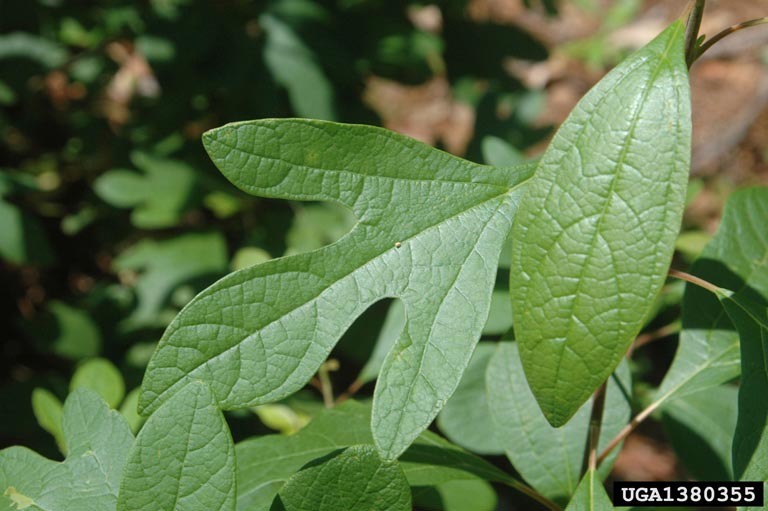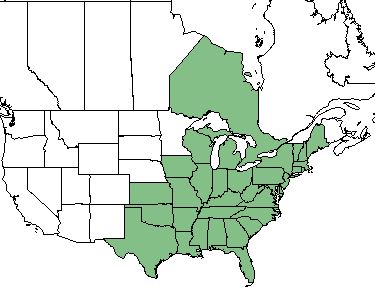Sassafras albidum
Common Names: Nees sassafras [1]
| Sassafras albidum | |
|---|---|

| |
| Photo by Chris Evans, University of Illinois, Bugwood.org hosted at Forestryimages.org | |
| Scientific classification | |
| Kingdom: | Plantae |
| Division: | Magnoliophyta - Flowering plants |
| Class: | Magnoliopsida - Dicots |
| Order: | Laurales |
| Family: | Lauraceae |
| Genus: | Sassafras |
| Species: | S. albidum |
| Binomial name | |
| Sassafras albidum (Nutt.) Nees | |

| |
| Natural range of Sassafras albidum from USDA NRCS Plants Database. | |
Contents
Taxonomic Notes
Synonym: S. albidum var. molle (Rafinesque) Fernald
Variety: none
Description
S. albidum is a perennial shrub/tree of the Lauraceae family that is native to North America. [1]
Distribution
S. albidum is found throughout the eastern United States as far west as Texas and Kansas, as well as Ontario, Canada. [1]
Ecology
Habitat
Habitats for S. albidum include forests, old fields, disturbed areas and even fencerows. [2]
The tree prefers low pH soils. [1]
Phenology
March is the primary month for S. albidum to flower. [3]
Use by animals
The fruit produced by the tree is commonly eaten by animals and in turn disperse the seeds. Such animals include, quail, wild turkeys, kingbirds, crested flycatchers, mockingbirds, sapsuckers, pileated woodpeckers, yellowthroat warblers, and phoebes. Other animals will eat the fruit, bark and wood as well; black bears, beavers, rabbits, and squirrels. Also, deer will forage in the foliage. [1]
Diseases and parasites
Insects will eat the entire leaves and the plants can develop root rot is they are in an environment with wet clay soil. [1]